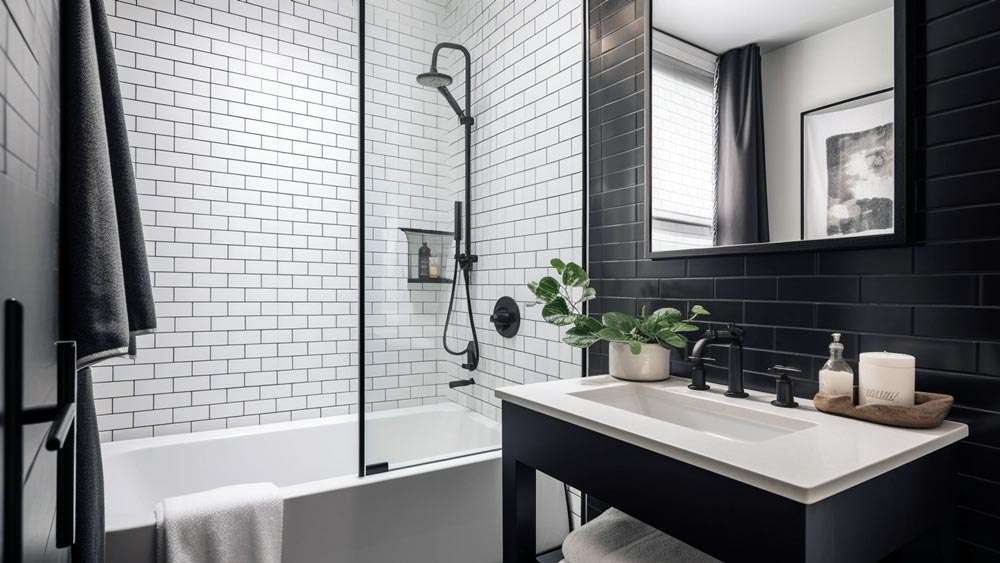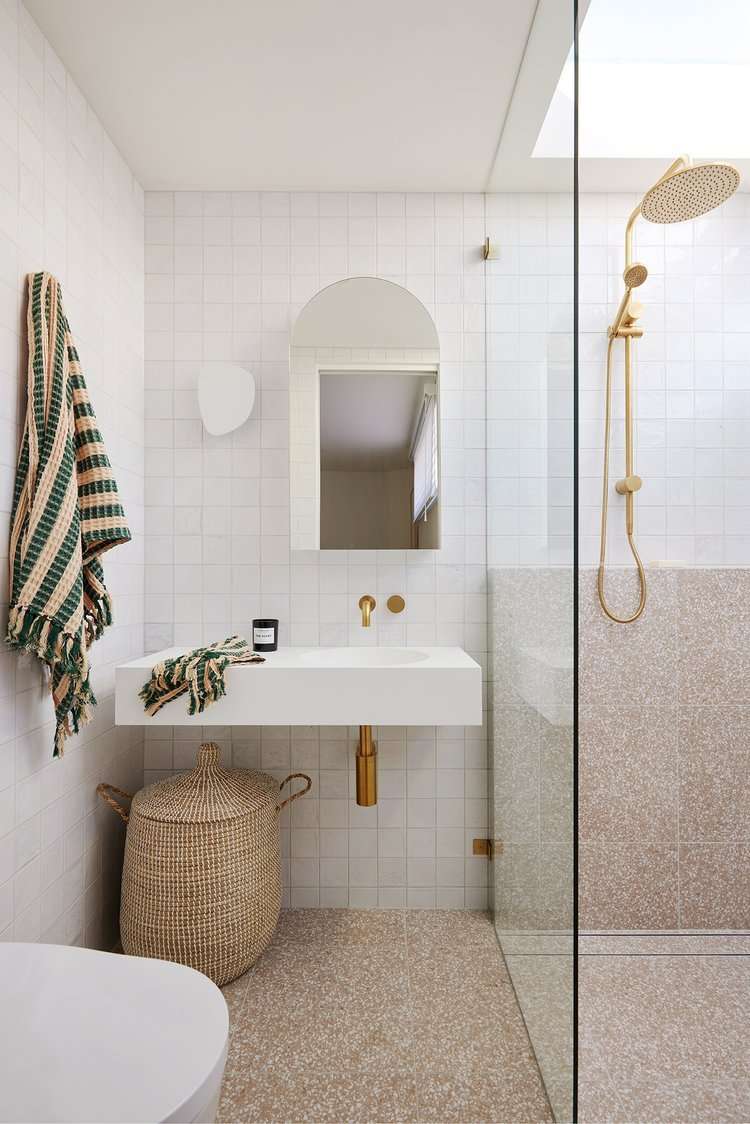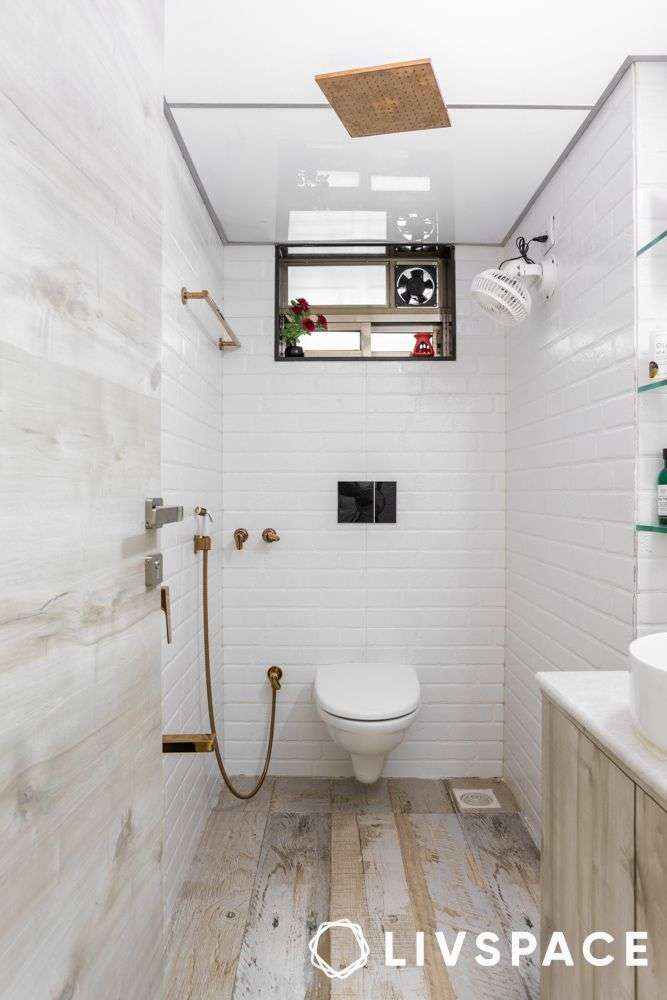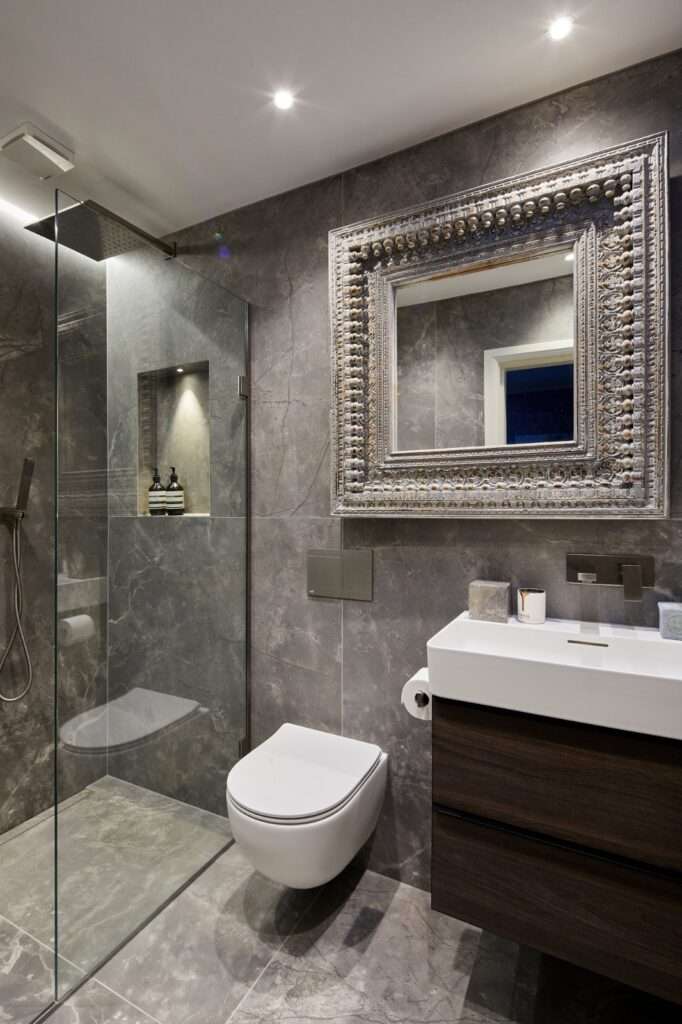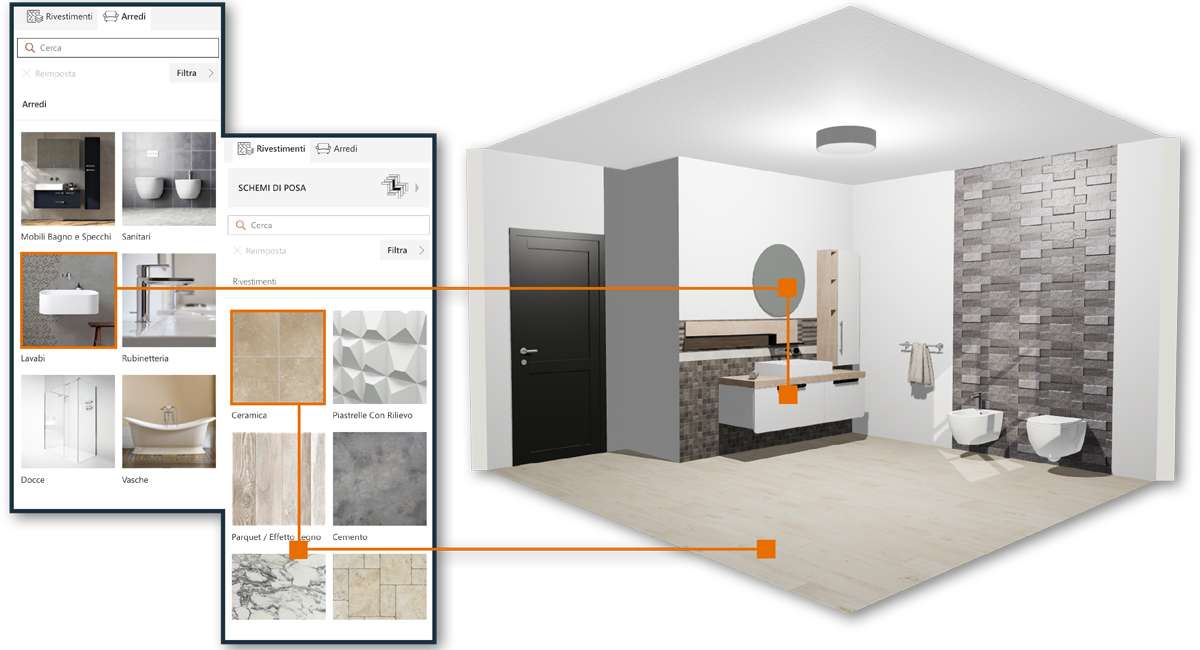The concept of “Modern bathroom and toilet designs in Nigeria” has undergone a significant transformation in recent years, moving away from purely functional spaces to areas of aesthetic appeal and personal comfort. This evolution reflects a growing awareness of the importance of home design and interior décor among Nigerians; Homeowners are now investing in high-quality fixtures, stylish tiles, and innovative layouts to create bathrooms and toilets that are both practical and visually stunning. The influence of global trends, coupled with the availability of a wider range of materials and design ideas, has spurred a new wave of creativity in bathroom and toilet design across the country. The desire to create a personal sanctuary within the home is now driving the demand for “Modern bathroom and toilet designs in Nigeria”.
Key Trends in Nigerian Bathroom Design
Several key trends are shaping the landscape of modern bathroom and toilet design in Nigeria. These include:
- Minimalism: Embracing clean lines, uncluttered spaces, and a focus on functionality.
- Natural Elements: Incorporating materials like wood, stone, and plants to bring a sense of nature indoors.
- Bold Colors and Patterns: Using vibrant colors and eye-catching patterns to create a statement.
- Smart Technology: Integrating features like smart toilets, digital showers, and motion-sensor lighting for added convenience and efficiency;
Optimizing Space in Smaller Bathrooms
Many Nigerian homes, particularly in urban areas, have smaller bathrooms and toilets. Effective space optimization is therefore crucial. Here are some strategies:
- Wall-Mounted Fixtures: Floating toilets and sinks create the illusion of more space and make cleaning easier.
- Corner Units: Corner showers and sinks maximize usable area.
- Mirrors: Strategically placed mirrors can visually expand the room.
- Light Colors: Light and neutral colors make a space feel brighter and more open.
Choosing the Right Materials
The choice of materials plays a significant role in the overall look and feel of a bathroom. Consider these factors:
- Durability: Select materials that can withstand moisture and humidity.
- Maintenance: Opt for materials that are easy to clean and maintain.
- Aesthetics: Choose materials that complement your overall design style.
Cost Considerations
The cost of modern bathroom and toilet designs can vary widely depending on the materials used, the complexity of the design, and the labor involved. It’s essential to establish a budget and stick to it. Get quotes from multiple contractors and compare prices before making any decisions. Remember that investing in quality materials and workmanship can save you money in the long run by reducing the need for repairs and replacements.
Ultimately, achieving stunning “Modern bathroom and toilet designs in Nigeria” comes down to careful planning, thoughtful material selection, and an understanding of the available space. By embracing current trends and prioritizing functionality, you can create a bathroom and toilet that is both beautiful and practical.
MODERN BATHROOM AND TOILET DESIGNS IN NIGERIA
The concept of “Modern bathroom and toilet designs in Nigeria” has undergone a significant transformation in recent years, moving away from purely functional spaces to areas of aesthetic appeal and personal comfort. This evolution reflects a growing awareness of the importance of home design and interior décor among Nigerians. Homeowners are now investing in high-quality fixtures, stylish tiles, and innovative layouts to create bathrooms and toilets that are both practical and visually stunning. The influence of global trends, coupled with the availability of a wider range of materials and design ideas, has spurred a new wave of creativity in bathroom and toilet design across the country. The desire to create a personal sanctuary within the home is now driving the demand for “Modern bathroom and toilet designs in Nigeria”.
KEY TRENDS IN NIGERIAN BATHROOM DESIGN
Several key trends are shaping the landscape of modern bathroom and toilet design in Nigeria. These include:
– Minimalism: Embracing clean lines, uncluttered spaces, and a focus on functionality.
– Natural Elements: Incorporating materials like wood, stone, and plants to bring a sense of nature indoors.
– Bold Colors and Patterns: Using vibrant colors and eye-catching patterns to create a statement.
– Smart Technology: Integrating features like smart toilets, digital showers, and motion-sensor lighting for added convenience and efficiency.
OPTIMIZING SPACE IN SMALLER BATHROOMS
Many Nigerian homes, particularly in urban areas, have smaller bathrooms and toilets. Effective space optimization is therefore crucial. Here are some strategies:
– Wall-Mounted Fixtures: Floating toilets and sinks create the illusion of more space and make cleaning easier.
– Corner Units: Corner showers and sinks maximize usable area.
– Mirrors: Strategically placed mirrors can visually expand the room.
– Light Colors: Light and neutral colors make a space feel brighter and more open.
CHOOSING THE RIGHT MATERIALS
The choice of materials plays a significant role in the overall look and feel of a bathroom. Consider these factors:
– Durability: Select materials that can withstand moisture and humidity.
– Maintenance: Opt for materials that are easy to clean and maintain.
– Aesthetics: Choose materials that complement your overall design style.
COST CONSIDERATIONS
The cost of modern bathroom and toilet designs can vary widely depending on the materials used, the complexity of the design, and the labor involved. It’s essential to establish a budget and stick to it. Get quotes from multiple contractors and compare prices before making any decisions. Remember that investing in quality materials and workmanship can save you money in the long run by reducing the need for repairs and replacements.
Ultimately, achieving stunning “Modern bathroom and toilet designs in Nigeria” comes down to careful planning, thoughtful material selection, and an understanding of the available space. By embracing current trends and prioritizing functionality, you can create a bathroom and toilet that is both beautiful and practical.
THE IMPACT OF CULTURAL PREFERENCES
While global design trends exert considerable influence, it is imperative to acknowledge the significance of cultural preferences in shaping bathroom and toilet aesthetics within Nigeria. The incorporation of locally sourced materials, such as traditional terracotta tiles or handcrafted washbasins, can imbue the space with a distinctive Nigerian identity. Furthermore, consideration should be given to prevailing cultural norms regarding privacy and hygiene. For instance, the inclusion of a separate hand-washing area outside the toilet cubicle may be deemed essential in certain communities. An understanding of these nuanced cultural requirements is paramount for architects and interior designers seeking to create spaces that resonate with the local populace.
SUSTAINABLE DESIGN PRACTICES
The burgeoning global emphasis on environmental sustainability is increasingly impacting bathroom design in Nigeria. Water conservation strategies are of particular relevance, given the growing concerns regarding water scarcity in certain regions. The installation of low-flow showerheads, dual-flush toilets, and aerated faucets can significantly reduce water consumption without compromising functionality. Furthermore, the utilization of recycled or reclaimed materials, such as recycled glass tiles or repurposed wood vanities, can contribute to a more eco-friendly bathroom design. The integration of natural light through larger windows or skylights can also minimize the reliance on artificial lighting, thereby reducing energy consumption. Embracing these sustainable design practices not only benefits the environment but also enhances the long-term value and appeal of the property.
THE ROLE OF LIGHTING
Lighting is a critical element in bathroom and toilet design, influencing both functionality and ambiance. A well-lit bathroom should incorporate a combination of ambient, task, and accent lighting. Ambient lighting provides overall illumination, while task lighting is essential for activities such as shaving or applying makeup. Accent lighting can be used to highlight specific features, such as artwork or decorative tiles. The strategic placement of lighting fixtures can also create the illusion of more space, particularly in smaller bathrooms. Furthermore, the use of energy-efficient LED lighting can significantly reduce energy consumption and lower electricity bills.
FUTURE TRENDS AND INNOVATIONS
The future of bathroom and toilet design in Nigeria is likely to be shaped by technological advancements and evolving consumer preferences. The integration of smart home technology, such as voice-controlled lighting and temperature regulation, is expected to become more prevalent. Self-cleaning toilets and antimicrobial surfaces may also gain popularity, driven by a growing awareness of hygiene and sanitation. Furthermore, the increasing adoption of virtual reality (VR) and augmented reality (AR) technologies may revolutionize the design process, allowing homeowners to visualize their bathroom designs in a realistic and interactive manner before making any commitments. These future trends promise to transform the bathroom into an even more personalized and technologically advanced space.

